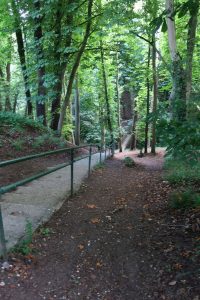
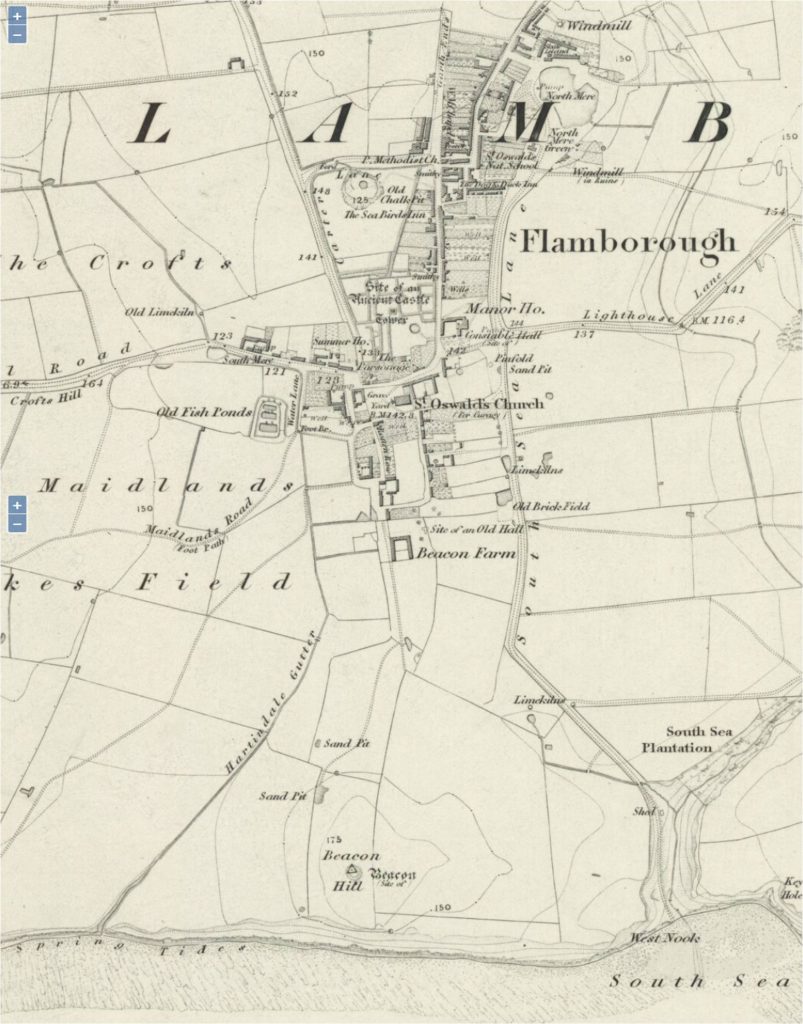
The parish of Flamborough is situated in what was once the wapentake of Dickering, part of the historical East Riding of Yorkshire (see maps in Introduction). The promontory on which Flamborough stands is separated from the “mainland” by a part natural and part man-made dyke and ditch defensive earthwork called Dane’s Dyke, though excavations have revealed that it dates from far earlier times than the Vikings. The signal station on Beacon Hill, where six large sandstone blocks used to stand, is probably Roman in origin; in 1588 three beacons took light from Bridlington and passed it to Rudston. In 1796 there was a flag signal station on the headland to warn of the approach of French warships, and the old octagonal chalk lighthouse, built in 1674 and never kindled, is still standing by the road leading to the headland, now enclosed by a golf course.
There were two estates at Flamborough in 1066. Clibert was still holding his after the Conquest, which implies it was of little value or possibly waste, but the estate of Earl Harold – as the Saxon King of England was known by the Normans – was awarded to Hugh d’Avranches, Earl of Chester. The Earl in turn granted the estate to his constable, later passing down to Robert the Constable, the ancestor of the Constable family. It was held by the same family until 1537, when it was forfeited to the Crown by Sir Robert Constable for his part in the Pilgrimage of Grace. However, the estate was later restored by Elizabeth I to successive members of the Constable family until it was finally sold by the heavily indebted Sir William Constable in 1636. By 1650 it was owned by the Strickland family who held it until the 1900s.
The fortified manor house of the Constables, known as the Castle, stood a short distance to the north of the church, on the other side of the more recent parsonage. In 1351 Marmaduke Constable received licence to crenellate it, and Leland, writing 200 years later, described it as “now taken rather for a maner place then a castelle”. At the death of Sir Robert Constable in 1537 it included a tower, a hall, a great parlour, a lord’s parlour, a chapel, a court house, a mill house and a great barn. Only parts of the tower and earthworks remain today and by the time the Castle was restored to the Constables it was no longer habitable. The family therefore took up residence in the now demolished South Hall (Old Hall on the map published in 1854), next to Beacon Farm. The 19th century farm house that stands across the road to the east of the Castle was built on the site of the Stricklands’ 17th century 12 hearth manor house, though the map of 1854 confusingly describes the area as the site of Constable Hall. The current house was known until recently as Manor House and is now called Flamborough Manor.
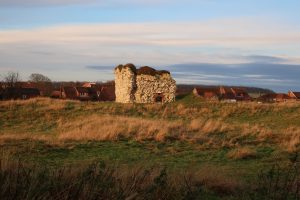 | 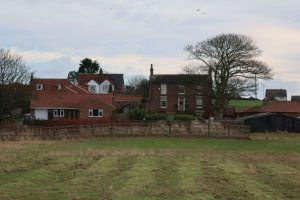 | 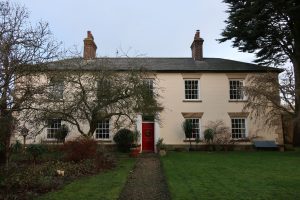 | 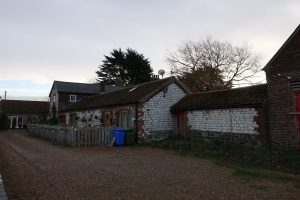 |
A Norman church was built at Flamborough in about 1100 and was mentioned in 1130 as an endowment of Bridlington priory. Of this aiseless church only the rebuilt chancel arch and the tub font with later markings remain in the much restored current church, which consists of a nave with north and south aisles (13th century), a 15th century chancel screen (probably from Bridlington priory), a west tower and a south porch (19th century). Extensive interior restorations were carried out in the 17th century, exterior repairs in the 18th and the whole church was almost entirely rebuilt in the 19th. The plain chest tomb of Sir Marmaduke Constable (d1520) lies to the north of the altar, surmounted by his coat of arms, a brass inscription and a stone effigy representing the upper part of his skeleton. The ribcage is visible and reveals a bulbous heart and a curious lump of stone, said to be the toad that he swallowed while drinking some water which ate away his heart until he died.
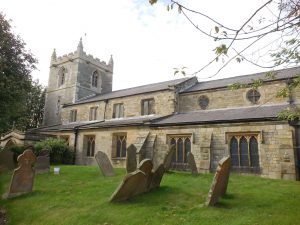 1st right: 12th century font, 2018 2nd right: 15th century chancel screen, 2018 3rd right: Sir Marmaduke Constable's tomb, 2018 | 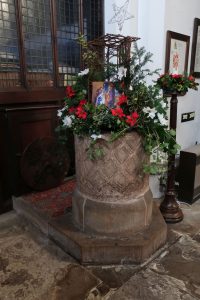 | 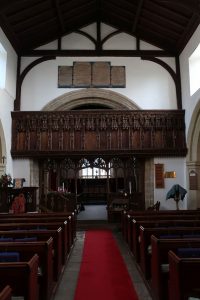 | 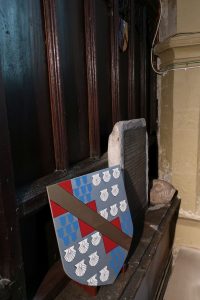 |
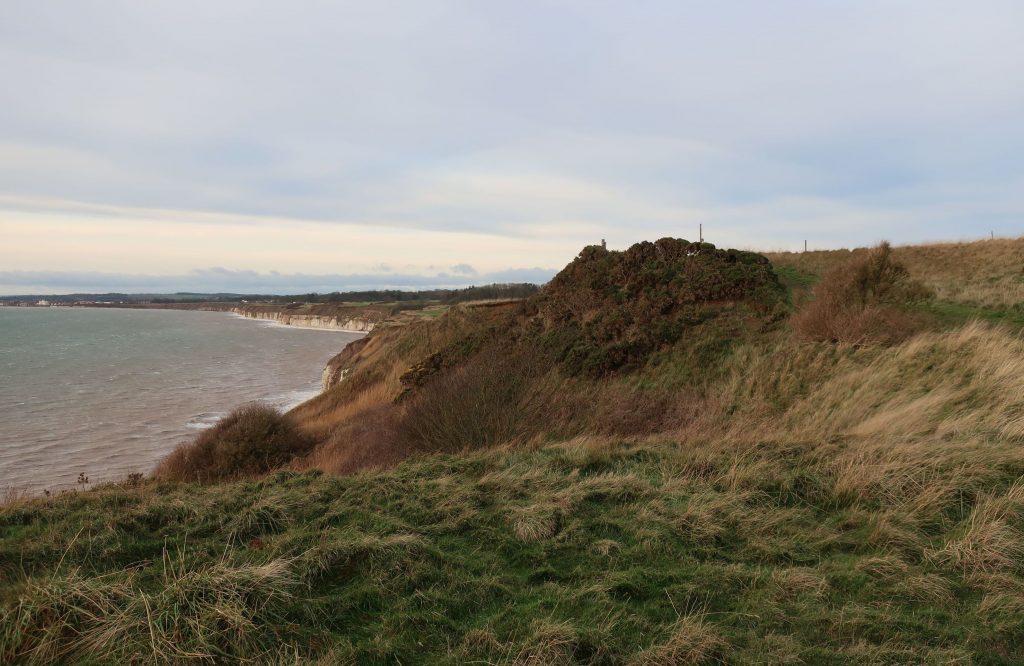
Robert Puckering of the Puckerings of Flamborough was already the lessee of the tithes of neighbouring Bempton, Newsham and Speeton when he took part in a survey conducted at Flamborough in 1538-39. He was appointed the Crown’s bailiff in the town for the period 1540-41 and thereafter set about buying and leasing lands in the parish, including the manor house, which he and eleven other inhabitants of Flamborough leased from the Crown in 1561. In the same year he took fright when two great galleons appeared off Flamborough Head, prompting him to start a fire at Beacon Hill, though not in the beacon itself, which others had the wisdom to extinguish. According to William Strickland’s report on the incident to the Earl of Rutland, Lord President in the North, “Robarte Puckeringe … had made muche cost of buyldinge at Flamburghe, his house standing nexte the daunger”, which indicates that he was living in South Hall (Old Hall) at the time. The galleons, it was later established, were transporting Mary Queen of Scots from France to Scotland.
Members of the Pickerings of Scalby and the Pickerings of Wawne also lived for a time in Flamborough.
Sources:
https://www.genuki.org.uk/big/eng/YKS/ERY/Flamborough
https://en.wikipedia.org/wiki/Flamborough
https://opendomesday.org/place/TA2270/flamborough
Victoria History of the County of York, East Riding, vol. 2, pp. 151-164 (not online)
Flamborough Castle: https://historicengland.org.uk/listing/the-list/list-entry/1014896?section=official-list-entry
Flamborough Castle: https://historicengland.org.uk/listing/the-list/list-entry/1083401?section=official-list-entry
Itinerary of John Leland: https://archive.org/details/itineraryofjohnl01lelauoft/page/61
Church of St. Oswald: https://historicengland.org.uk/listing/the-list/list-entry/1162230?section=official-list-entry
Northern Notes and Queries, vol. 4 pp. 47-48: https://archive.org/details/scottishantiquar04edinuoft/page/n56
